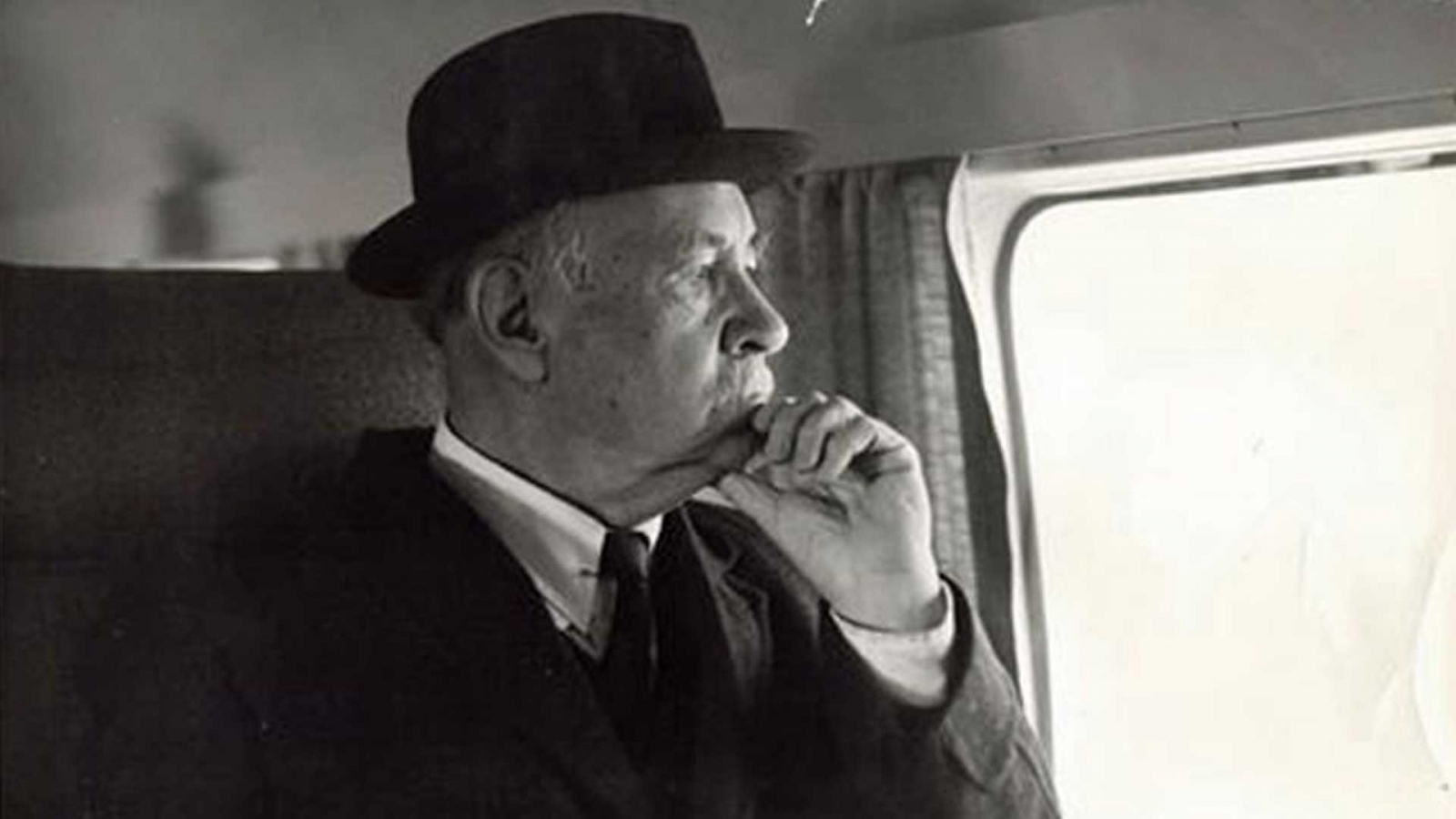
“During the year 1900, at the age of about 11 years, I had a wonderful dream. For several days I lived under the impression of that dream and have always remembered the details.

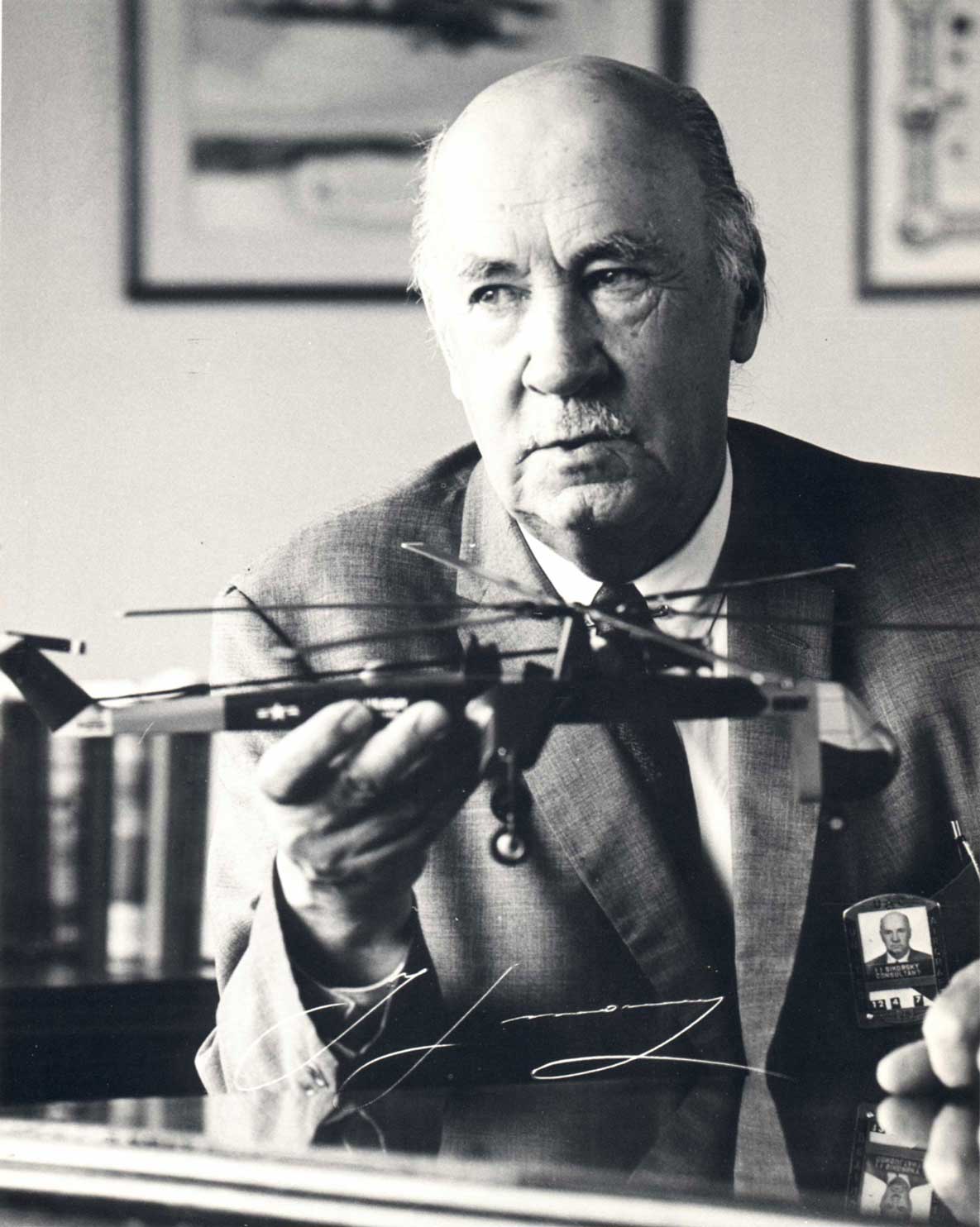
Sikorsky, Igor Ivanovich
Industrialist/Inventor
1889-1972
I saw myself walking along a narrow, luxuriously decorated passageway. On both sides were walnut doors, similar to the state room doors of a steamer. The floor was covered with an attractive carpet. A spherical electric light from the ceiling produced a pleasant bluish illumination. Walking slowly, I felt a slight vibration under my feet and was not surprised to find that the feeling was different from that experienced on a steamer or on a railroad train. I took this for granted because in my dream I knew that I was on board a large flying ship in the air. Just as I reached the end of the corridor and opened a door to enter a decorated lounge, I woke up.
Everything was over. The palatial flying ship was only a beautiful creation of the imagination. At that age I had been told that man never produced a successful flying machine and that it was considered impossible.”
“Impossible” but not to Igor Sikorsky who went on to distinguish himself in three different aeronautical fields – large multi-engine aircraft, transoceanic flying boats and helicopters.
To feel the depth of this aviation pioneer we have compiled below a sampling of the comments of Igor I. Sikorsky on aviation and engineering, culled from his writings, speeches, interviews and several unpublished manuscripts. Minimal editing was exercised, so as to preserve the exact words and the accent as much as possible.

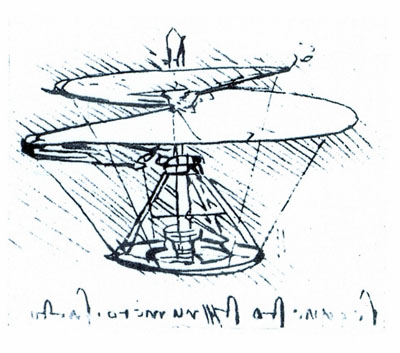
Leonardo da Vinci Sketch of a Helicopter - Igor's Inspiration
Of Early Aviation;
"We were ignorant, and we were ignorant of the fact that we were ignorant! This was ignorance squared, and it often led to disaster."

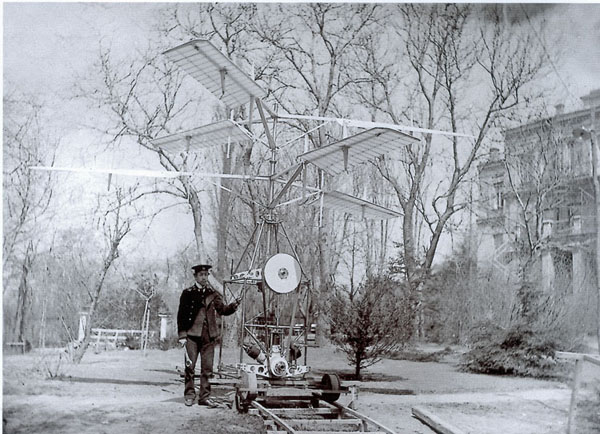
H-2 Helicopter 1910
"My first two machines were built between 1909 and 1910 and were helicopters. The first of these ships refused to leave the ground while the second could lift itself, but refused to lift me."
Of The Early Russian Flights;
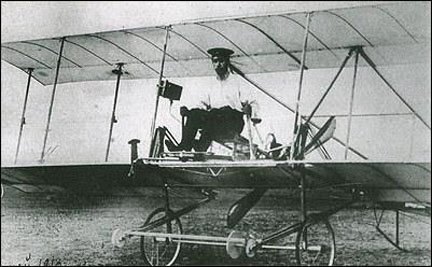

Sikorsky S-1 May 1910
"Throughout 1910 and 1911, I followed the intensely interesting and romantic road of the early pioneers who built their machines without knowing how to build them and then climbed into the cockpits to try to fly their aircraft without knowing how to fly..!"
"In the pioneering days, self training, both in engineering problems and in piloting, was an important condition of success and even survival."
"There was also the comforting realization that nearly all discoveries were preceded by numerous failures."
"In those early days, the Chief Engineer was almost always the Chief Pilot as well. This had the automatic result of eliminating poor engineering very early in aviation."
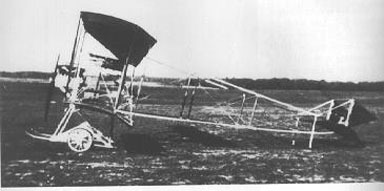
Sikorsky S-5, Igor's First "Real" Airplane
"I will admit that a great deal of the design of these early aircraft were based on pure guess work. We had little except the flight of birds to turn to for information."
"For take-off, some friends or spectators held the tail. We fiddled with the needle-valve and spark to get maximum rpm for that particular day. Then they let go and off you went. You did not touch engine controls in flight. Most of the landings were when the aircraft decided to land, not the pilot."

Igor at the controls of the S-5
"It was on this aircraft (S-5) that I succeeded to teach myself to fly, first by running and making a considerable number of short, straight-line hops and finally making my first circle in the air."
"On the S-5, I sat entirely in the open just above and behind the lower wing. The view was free in nearly all directions, including straight down."
"The work of a pioneer in science of technique often consists of finding a correct solution, or creating a working mechanism, based on laws that are not yet discovered."
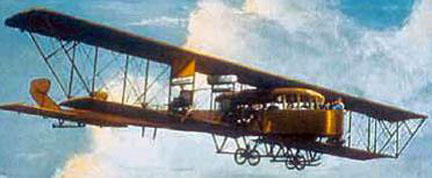
Sikorsky S-21 The Grand 1913
"It was a unique aircraft...It took off at a speed of 60 miles per hour, cruised at 60 miles and stalled at 60 miles!"
"We knew we were building a light structure (the S-21 Grand), but it seemed more productive to fly prudently at a load factor of 2 than to roll safely along the ground at a load factor of 3."
"It was only a few years ago that a pilot who had an altimeter, a tachometer, an air speed indicator, and a fuel gauge was thought to have extremely good equipment."
On Coming to America 1919;

Igor in New York City 1919
"In America I found the confirmation of my hopes and came to understand the reason for the success of this country. Nothing can equal free work of free men. This is the foundation upon which the indisputable success of the United States has been built."
"Money lost-nothing lost, Health lost-little lost, Spirit lost-everything lost."

S-29A under Construction at Utgoff Farm 1923
"I have been hungry in America. I have known what it is to seek for work and not find it in America. But there was never a day during the hardest times that I have lost hope in my planes or that I did not say aloud, "Thank God I am here, a free man, breathing free air. No man can order what I do. If I fail, I can try again!"